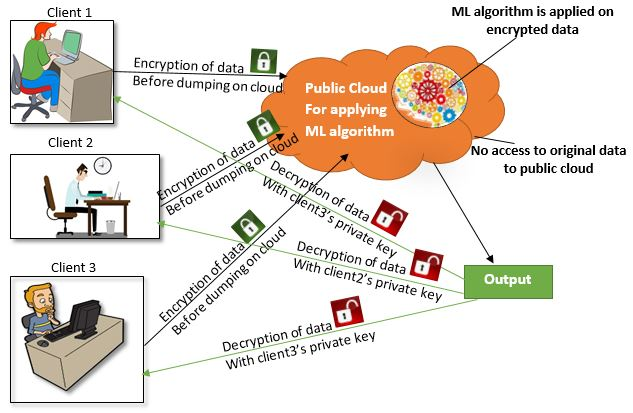Client Overview:
Our client, an esteemed group of schools based in Noida, India, caters to a population of over 5,000+ students, ranging from primary to high school levels. They have established themselves as a leading educational institution in North India, with a strong focus on academic excellence and student development
Business Challenge:
When the COVID-19 pandemic struck, our client faced an unprecedented situation that forced them to transition their classrooms from physical to virtual mode. This sudden shift presented challenges in maintaining the same level of student engagement as before. They observed a significant decrease in student participation and interaction, leading to concerns about the effectiveness of the online learning experience.
The Solution:
To address the challenge of declining student engagement, our team devised an innovative solution that combined advanced analytics and real-time monitoring. Leveraging cutting-edge technologies such as facial detection and tracking, our platform seamlessly integrated with the school's existing infrastructure.
Smart Attendance:
The proposed face recognition window is categorized into four major steps namely,
i. Image Acquisition
ii. Face Detection
iii. Face Recognition
iv. Attendance Marking.
Our solution integrates the MediaPipe library through TensorFlow.js, which enhances the functionality of our face recognition system. MediaPipe provides robust and efficient computer vision algorithms for tasks such as face detection and recognition.
From the extracted frames, our solution randomly selects two or more frames to proceed with the subsequent processing steps. This random selection ensures that the analysis is based on representative frames from the lecture session. By employing this approach, our Smart Attendance solution accurately tracks student engagement and attendance during online classes, providing real-time insights into student participation and behavior.
The frames are processed locally on the client's device, improving data privacy by eliminating the need to send sensitive information over a network. Additionally, this approach reduces the volume of data that needs to be transferred, resulting in more efficient communication. The integration of MediaPipe further enhances the accuracy and efficiency of our solution's face recognition capabilities.

Fig 1: Sample screen of image recognition which is available to the teacher Interactive Quizzes and Polls
Leveraging machine learning algorithms, we implemented a sophisticated technology that enables the generation of intelligent quizzes and polls based on the presented content in real time. The machine learning algorithms analyze the content being taught during the online class, extracting key concepts and identifying relevant question types. This process involves natural language processing (NLP) techniques to understand the context and structure of the content.

Fig 2: Poll quiz feature interface
Data Privacy and Security:
To ensure data privacy, our solution incorporates Privacy Preserving Machine Learning (PPML) techniques, specifically differential privacy. With differential privacy, we introduce controlled noise during data processing to protect individual student information.
In our system, differential privacy is applied during the calculation of facial keypoints. By adding carefully calibrated noise to the extracted facial features, we protect the privacy of individuals while preserving the overall accuracy of the analysis. This noise injection prevents the possibility of identifying specific individuals from the facial keypoints.
The noisy facial keypoints are then used for computing anonymized metrics, such as engagement levels, which are sent to the backend for further analysis. This approach allows us to generate valuable insights while maintaining the privacy and confidentiality of individual student data.
By leveraging differential privacy, our solution strikes a balance between accurate analysis and protecting the privacy of students. It ensures that even with access to the computed facial keypoints, individual identities cannot be determined, providing a strong safeguard for data privacy throughout the smart attendance tracking process.

Fig 3: Visual Representation on how PPML Works
High-Quality Video Calling:
Integrated high-quality video calling capabilities for seamless communication between teachers and students. Our solution optimizes the video calling experience by dynamically adjusting the video resolution and frame rate based on the available network bandwidth. This adaptive streaming technique ensures that the video quality remains high, even in challenging network conditions.
Real-Time Dashboard:
Provided teachers with a real-time dashboard to monitor student engagement and make necessary adjustments during classes
.
Dashboard Components:
Student Engagement Metrics: Displays metrics on student participation, attentiveness, and responsiveness.
Visual Representation: Presents data using charts and graphs for easy understanding.
Real-Time Updates: Provides up-to-date information during ongoing classes.
Individual Student Profiles: Offers comprehensive profiles with attendance, quiz scores, and more.
Intervention and Interaction Tools: Enables direct communication with students through notifications and messages.
It empowers teachers to make data-informed decisions, personalize instruction, and manage the virtual classroom effectively. With real-time updates and intervention tools, teachers can enhance student participation and learning outcomes in a dynamic online learning environment.
Outcomes:
Improved Student Engagement: Witnessed a 20% increase in student engagement and active participation during online classes.
Enhanced Learning Outcomes: The integration of interactive quizzes, polls, and live question posting resulted in improved understanding and retention of the subject matter.
Streamlined Classroom Management: Teachers saved 50% of the time spent on manual reviews, allowing them to handle 20% more cases.
Our innovative solution, tailored to our client's specific needs, was distinguished by its strong focus on data privacy and privacy-responsible AI practices. By combining advanced analytics, real-time monitoring, interactive features, and robust privacy measures, we successfully addressed the challenge of student engagement in online classrooms. This approach fostered a secure and effective virtual learning environment that upheld the principles of privacy and data protection for our clients and their students.
Powered by Froala Editor